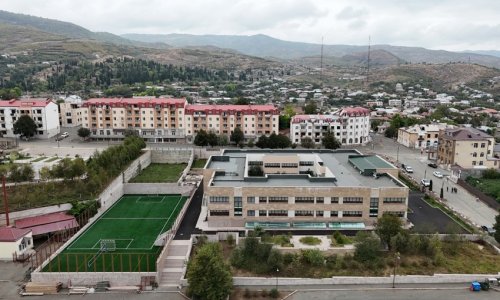Follow us !
More of Nazi art hoarder's secret £1bn collection revealled - PHOTO
Culture
21:14 | 25.11.2013

More of Nazi art hoarder's secret £1bn collection revealled - PHOTO
More works have been revealed from the £1billion stash of looted art which was found behind stacks of tins and rotting food in a Munich flat.German authorities released images today of valuable sketches and etchings by two of the early 20th Century's most prominent artists.Jewish Max Liebermann was one of the leading lights of German Impressionism, growing up in central Berlin and becoming a highly-respected artist before his death in 1935.And Norwegian artist Edvard Munch, most famous for his iconic painting The Scream, was highly favoured among Jewish collectors in 1930s Germany.Both had works among the thousands which were declared 'degenerate art' by the Nazis and were unceremoniously strong-armed at knock-down prices from their Jewish owners, only to fall into the hands of wealthy collectors after the war.Now striking works by the pair, never shown before publicly, have been revealed from the 1,401 artworks found in the Munich flat of Cornelius Gurlitt - bringing the total so far seen publicly to 79.Gurlitt, 80, the son of Dr Hildebrand Gurlitt, was stopped by customs officials in 2010 on a train from Switzerland with 9,000 Euros in cash and empty envelopes bearing the name of a Swiss bank.The chance find led customs officials to his flat, where they stumbled across what is described as one of the greatest art discoveries of modern times.They kept the hoard secret and its existence became known only a month ago.Gurlitt had been living a hermit's life, it is said, existing outside the systems of modern society, dealing entirely in cash and selling works on the black market whenever he ran out.In a rambling interview last month he said the works were rightly his - and they were all he had.'I will not give anything back voluntarily,’ said Mr Gurlitt. ‘I hope this gets resolved soon and I finally get my pictures back. 'I’ve never committed a crime, and even if I had, it would fall under the statute of limitations. If I were guilty, they would put me in prison.' He added: ‘I just wanted to live with my paintings.'It is thought German authorities are unable to prosecute him for ownership of the works themselves, but they are investigating him over related allegations including of tax evasion.Gurlitt, who suffers from a heart condition, said he had given state prosecutors investigating him ‘enough’ documents to prove his innocence.The new works have appeared on the official Lost Art website. Others include works by Picasso, Matisse and Renoir.At least 500 of the pictures have been identifed as being bought at rock-bottom prices from Jews seeking to raise the necessary cash to buy exit visas from Hitler’s Germany.But in the interview with Der Spiegel, Gurlitt said he had nothing to do with acquiring the paintings and felt deeply attached to them, having never loved another human being.He told the newspaper: ‘There are people who are still climbing mountains at 97, but I won’t live to be that old. At least they could have waited until I was dead to take away the pictures. There is nothing I have loved more in my life than my pictures.' Adolf Hitler declared a war on much modern art and culture, which he saw as hostile to Aryan ideals, when he became German Chancellor in 1933.Books were burned and paintings like those belonging to Gurlitt were confiscated or bought cheaply from Jewish families, often as a bartering chip to allow them to flee the country.Gurlitt's father Hildebrand was just one of a handful of experts trusted by Hitler to judge the qualities of what made a work of art degenerate.Many of the works were exhibited publicly in Munich in 1937 so the German people could learn what their rulers were telling them not to like.(dailymail.co.uk)ANN.Az










